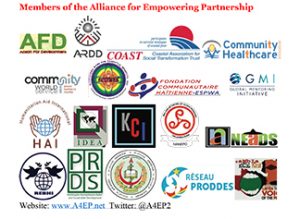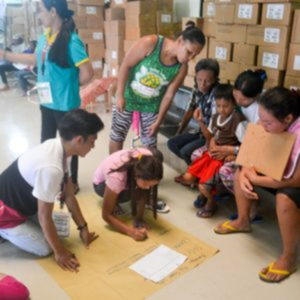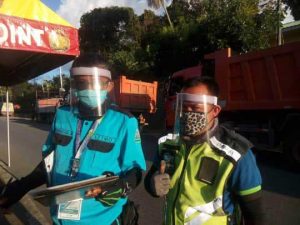SITUATION OVERVIEW
At around 10 AM of March 31, suspected NPA forces, estimated by the local people to number at least a hundred, who earlier raided the house of Datu Behar Hondilay, the local Higaunon chieftain of Salingsing, clashed with the patrolling soldiers in Lagkong, a community that is part of Sitio Salingsing, wounding 3 soldiers and sending the residents to evacuate to sitio Dungguan, a neighboring sitio.
Datu Behar, a member of the Civilian Armed Forces Geographical Unit (CAFGU), a para-military unit under the Army, was not in his house during the raid. Only his wife and children were present. The reason for the NPA’s raid of Datu Behar’s house is not clear but other Higaunon leaders said that the NPA wanted to confiscate his weapons issued to him as a CAFGU-member. Around 3 PM, in the población (town center) of Rogongon, Datu Behar was apprehended by police officers serving an arrest warrant for estafa and murder case committed some years ago. As of date, he is still detained at the police custodial facility in Iligan City.
After a two-hour running gun-battle, the NPA forces withdrew towards the thick forest. At around 4 PM, the NPA attacked a 12-person detachment of Army soldiers and paramilitary-troops belonging to the Civilian Armed Forces Geographical Unit (CAFGU) in Sitio Binasan, about 3 kilometers linear distance north-west of Salingsing but about 8 kilometers by road distance. The NPA failed to capture the army camp but one CAFGU member, husband of former ECOWEB volunteer, was killed during the battle. Re-enforcing soldiers positioned near Buntod Tambulan shelled NPA positions in Binasan but because the army detachment was near the community, howitzer shells landed and exploded not far from the community, sending people to scamper to safety. The fighting ended by early evening and the detachment was not captured.
The presence of NPA not far from their community, the shelling scared the residents of Buntod Tambulan and the presence of many soldiers, prompted the tribal leaders to call residents to stay together at the Torogan, the traditional venue for community gathering.
Early in the morning of April 1, re-enforcing soldiers arrived at Binasan and conducted clearing operations. The residents in outlying settlements were ordered to evacuate to the community center of Binasan. Sporadic gun-fires in the forested zones not far from Binasan and Baniogan were heard until April 6. The community was closed by soldiers for entry by outsiders as of 9th of April.
Both sitios Salingsing, and Binasan are in Barangay Rogongon, located at the hinterland of Iligan City. Barangay (village) Rogongon is one of the 44 barangays of Iligan City. The whole barangay is within the titled ancestral domain, of the indigenous Higaunon tribe, known to them as Bayug-Iligan. The ancestral domain covers more than 30,000 hectares of which about 60% is forested; among the remaining forest in northern Mindanao. The ancestral domain is also known to have rich deposits of gold, silver, copper, chromite and iron. Approximately 30% of the ancestral domain is covered with mining applications.
In the last 2 years, presence of armed units of suspected communist-led New Peoples’ Army (NPA) was reported and at least two battles occurred in 2020 amidst the COVID pandemic.
Army re-enforcements came late in the afternoon and in the evening of March 31. A full battalion of troops arrived on April 1 and April 2 to pursue the guerrillas who dispersed in smaller groups in various directions, thus affecting more communities.
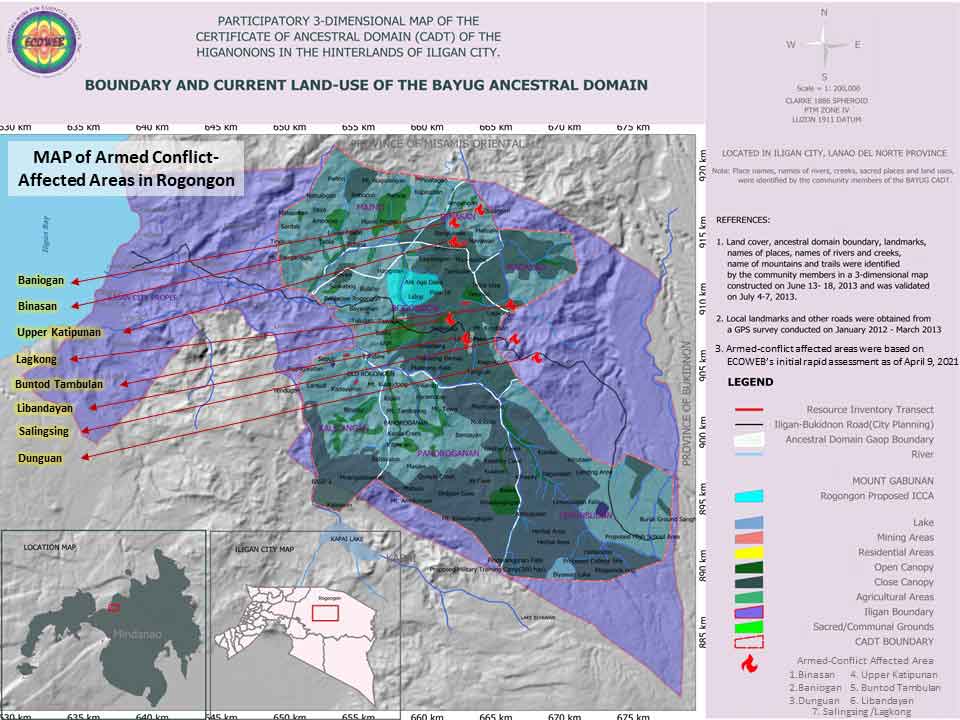
As of 5 PM of April 9, a total of 470 families has been affected from a total of 7 communities including sitios Binasan, Baniogan, Buntod Tambulan, Salingsing, Libandayan, Upper Katipunan and Dungguan all of Barangay Rogongon, Iligan City.
HUMANITARIAN SITUATION AND RESPONSE
A. Camp Management
Needs
As of April 9, 470 families were affected from the 7 communities of barangay Rogongon. Of the above number, 376 families (80%) are now staying overnight at their community centers while 94 (20%) are staying with relatives outside their community but within barangay Rogongon.
In Binasan and Baniogan, non-residents are not allowed to enter while residents are allowed to go outside with permission from the military forces stationed in the area, but have to return before sunset. They are also not allowed to work in their farms that are located far from the community evacuation site. Due to continued sighting of NPA forces around the area, the affected residents are also not going outside the community evacuation site for fear of being caught in crossfire. Trauma were noted by the community leaders especially among children who said to show extreme fear every time they hear gun shots. These children with their elders had to scamper during the firefight on March 31, many even lost or damaged their slippers and sustained some wounds during running, they said.
The displaced families are staying in the tribal hall and in the homes of relatives living in the community evacuation site. Some homes are hosting up to 3 families while some only let the children of displaced families stay in their homes while their parents and other adult members are staying outside in makeshift shanties.
The tribal leaders, in coordination with the military, are the ones managing the people inside the center. The community leaders are meeting government agencies and NGOs at the barangay hall and at the Torogan (tribal hall) in Buntod Tambulan, the nearest center to Binasan. They are also picking up food supply from government at the Barangay hall of Rogongon.
Community needs to be reminded for compliance of COVID-19 protocols especially in wearing of masks and in observing physical distancing as much as possible which might be difficult in a very crowded host homes.
Response
The Social Welfare and Development Office of the City of Iligan and the barangay officials of the Rogongon have provided instructions to tribal and purok leaders on how to manage their stay in the community evacuation site. Traditional Higaunon system of organization is also being followed. Barangay Rogongon LGU created a coordination and manage team for the emergency response led by a barangay kagawad with 23 volunteers.

Gaps and Constraints
Tribal leaders met by ECOWEB’s emergency team reported that they are able to manage their living arrangements. Displaced families stay with relatives although. Sleeping spaces are very crowded.
No face-masks or face shields were provided; physical distancing is not properly observed in the community.
B. Food Security, Agriculture & Nutrition
Needs
Food supply is running low in the community because they could not harvest their crops and the food stock allowed in the community stores are also limited. And if there are available supply, they also don’t have enough money to buy because they were not able to harvest their cash crops since the fighting.
Balance diet for affected population especially children, pregnant, lactating women and persons with disability in the communities of Binasan, Baniogan and Upper Katipunan as restrictions of movement are still in effect. In other areas, people are allowed to go to their farms to collect food in the morning until 5 PM.
Potential food shortage in the next 2 to 3 months could happen if farmers could not maintain their farms for longer time. To address this possibility, families that are temporarily living in the evacuation site planned to establish communal food gardens that will serve as buffer if their farms will fail. Even those living in the evacuation site whose farms are located far are also heavily equally affected and also planned to establish food gardens nearby.
They expressed need for vegetable seeds, farming tools and water facility for their gardens. Some, mostly women, also express the need for training on vegetable gardening.
Response
On Monday, April 5, the government’s Department of Social Welfare and Development (DSWD) has provided food packs consisting of 6 kilograms of
rice and 6 cans of sardines, and sleeping materials. Another ration of 6 kilos of rice was delivered in the morning of April 9.
ECOWEB, with the support from Bread for the World, provided food assistance based on expressed need of the heavily affected 120 families in Binasan and Buntod Tambulan. Food assistance delivered on April 9 included 10 kilos rice, 1 kilo mongo beans, half kilo dried fish, 1 kilo salt, half kilo sugar, and 1 pack coffee. Milk has also been provided for children, pregnant and lactating.
In terms of nutrition, provided food packs by government and ECOWEB included carbohydrates and some protein. Access to root crops was also reported to have helped sustained some food needs of the affected. For special needs as requested, only milk for children, pregnant and lactating has been provided so far by ECOWEB.
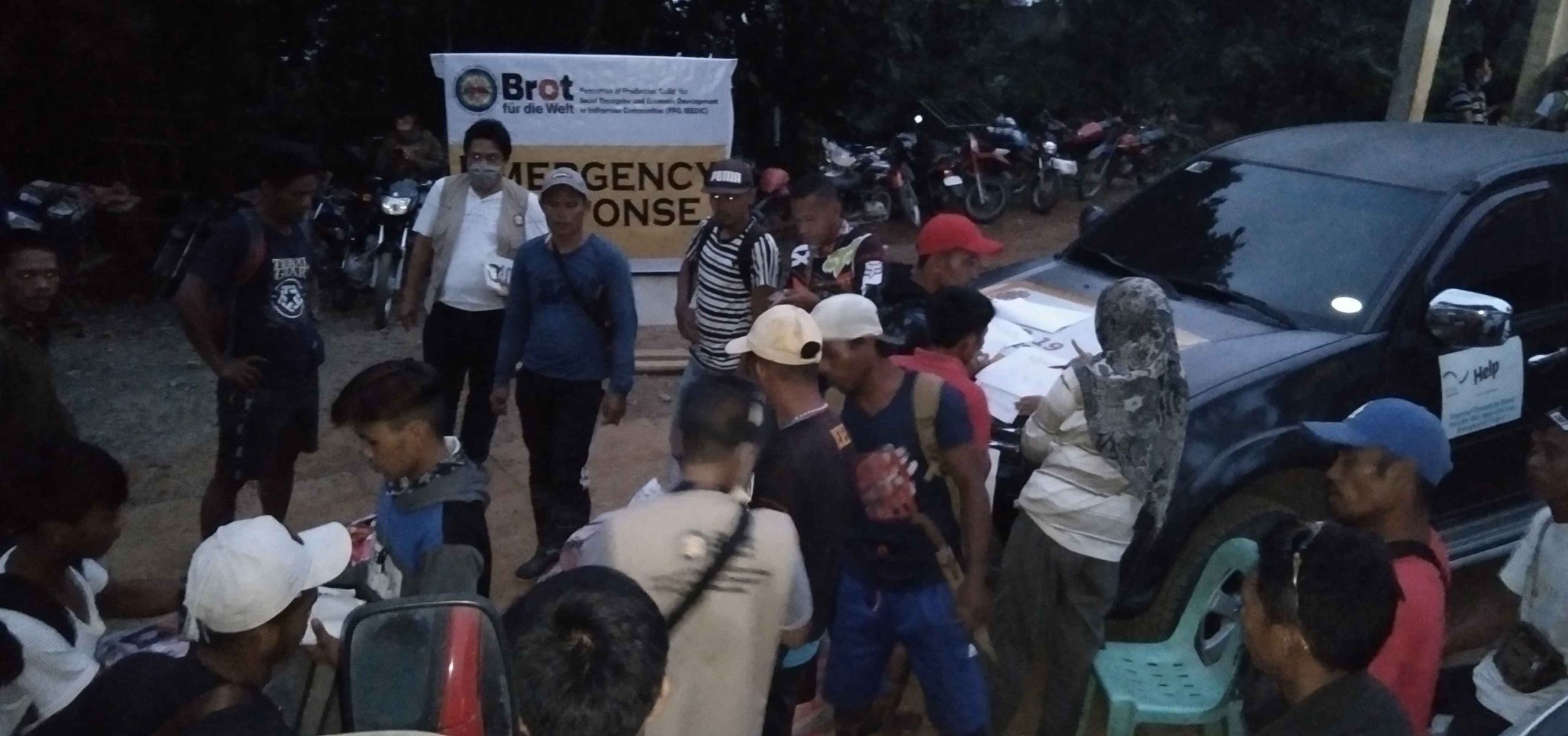
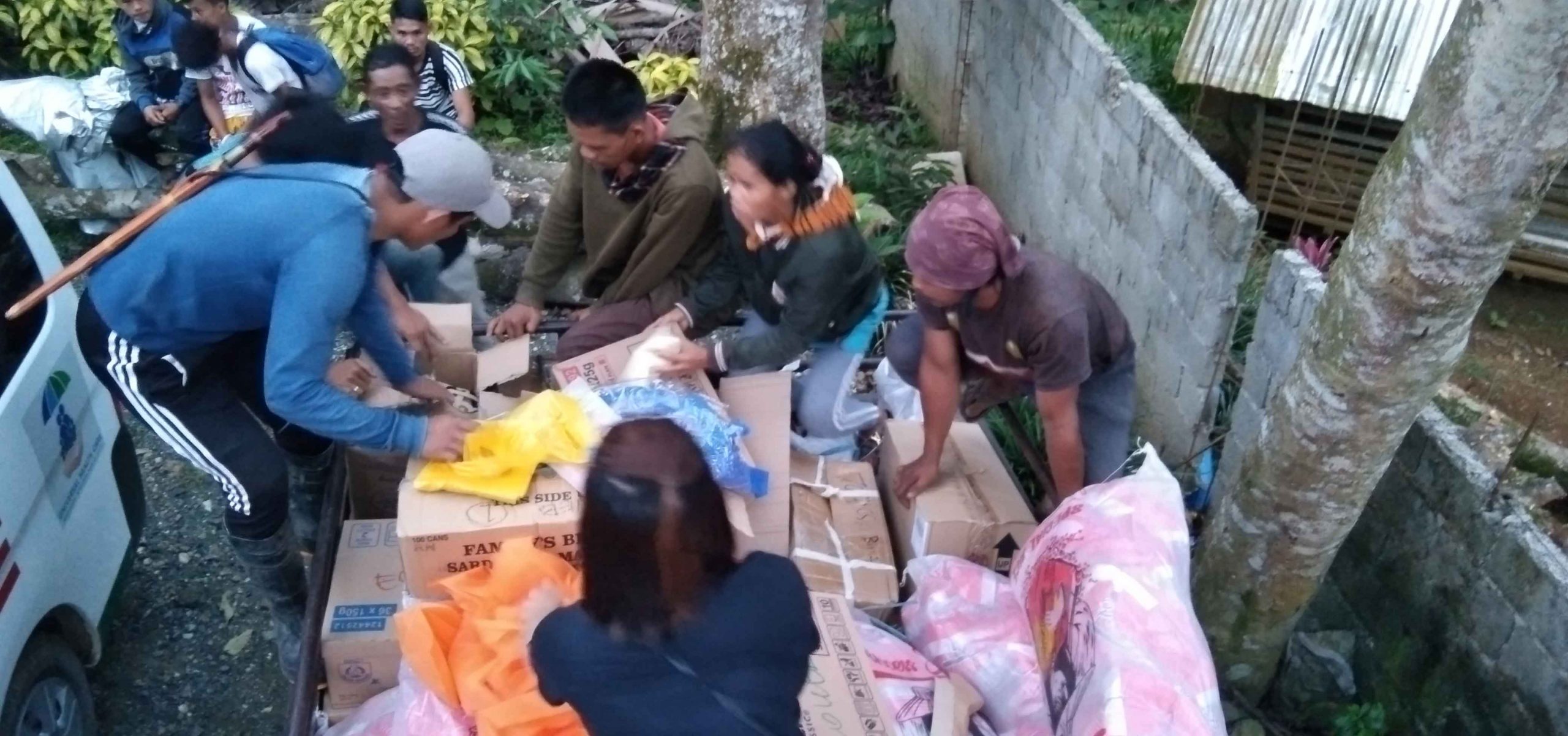
Gaps and Constraints
Regular food supply is needed until the situation is back to normal and the affected could normally harvest from their farms again. Supply of nutritious food is limited.
There is need for nutrition education in all communities.
Restriction of drop off points only to barangay hall which is still far from the affected communities. Needed support for motorcycles hauling the relief goods to the affected community.
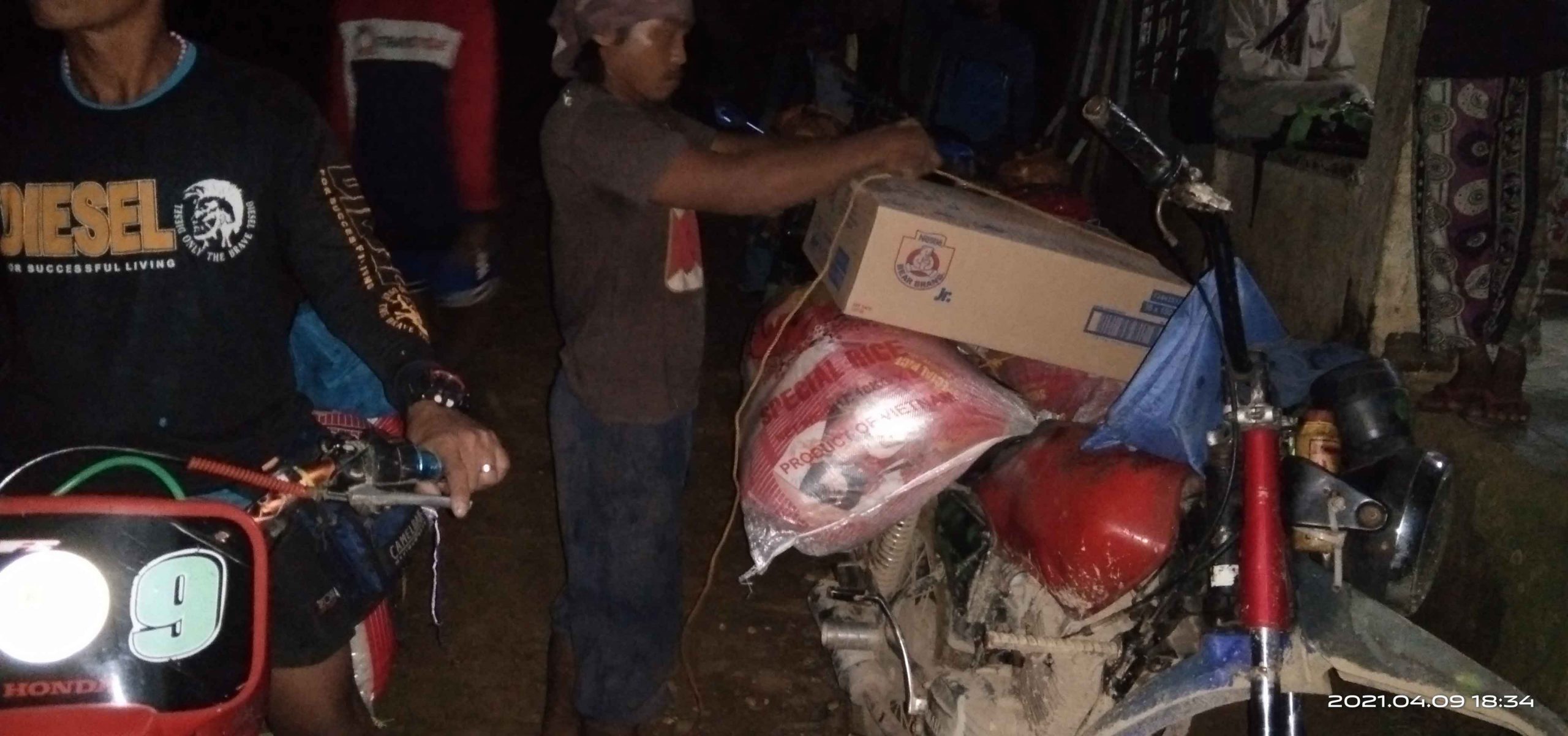

C. Shelter
Needs
Some families living in outlying and almost isolated settlements expressed their desire to relocate their houses near the community center. The military is encouraging them to relocate to avoid of being asked by the rebels for support, harassed or be caught in crossfires between rebels and government security forces.
Response
Tribal leaders welcome the idea of relocating and they identified certain areas where families could temporarily or permanently build their houses. ECOWEB is providing some support in the planning process for creating a planned “township” in the identified center of the affected community of Binasan.
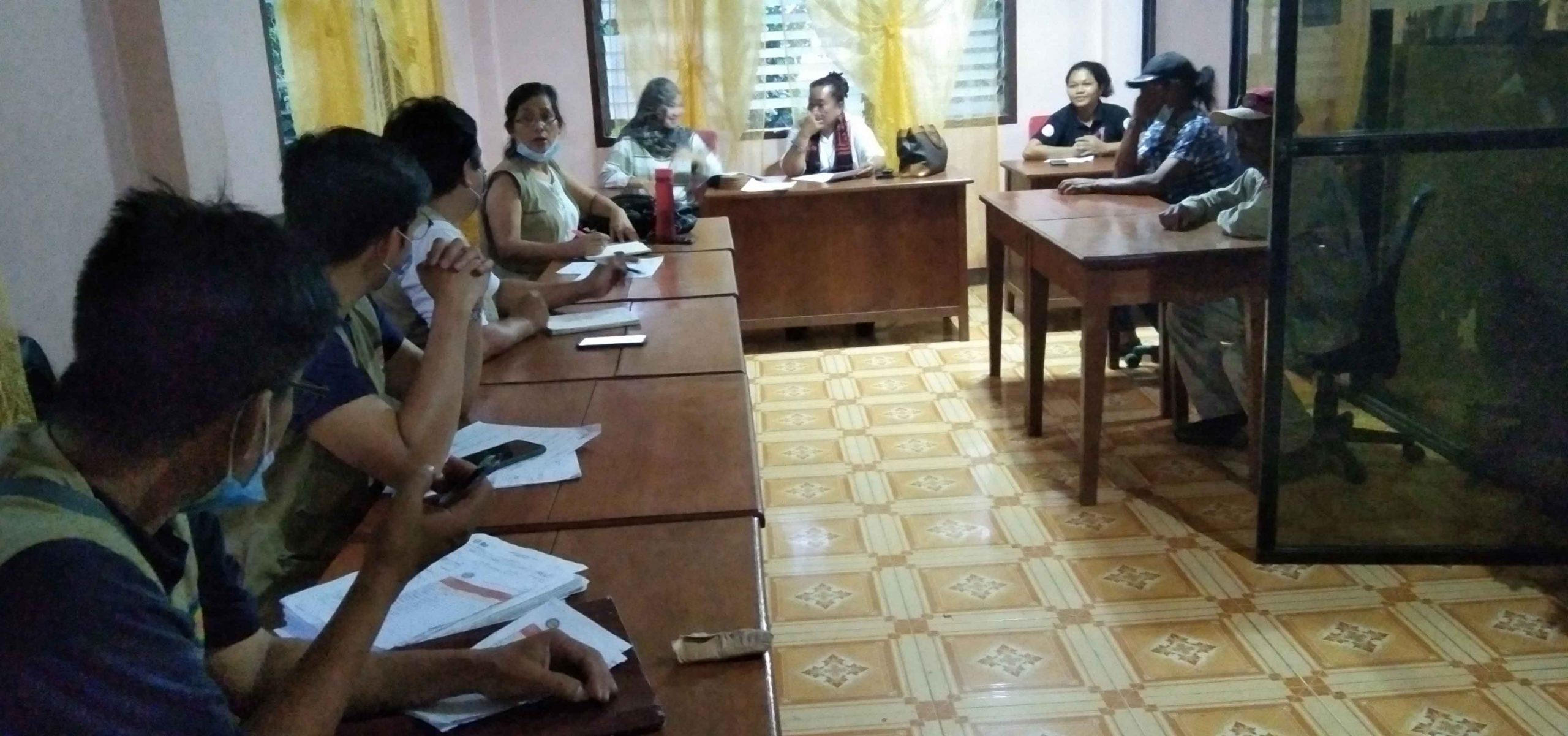
Gaps and Constraints
Technical assistance and support for construction of temporary or permanent shelters of the displaced/affected families. The military is recommending that those who live in isolated places should transfer near the center of the village.
D. Wash
Needs
- Lack of water container for fetching water.
- Lack of toilets and bathing places for men and boys, and women and girls at the community center in Binasan.
- Plan, design and materials for the improvement of water system of affected communities where population are concentrating during night-time particularly in Binasan, Baniogan, Buntod Tambulan, Salingsing, Upper Katipunan and Libandayan.
- Supplies for hygiene.
Response
ECOWEB provided laundry and bath soap to 120 families in Binasan and Buntod Tambulan. ECOWEB emergency team also discussed with the leaders from Binasan and Buntod Tambulan for the planning of their water system improvements. Initial planning as design was done by the leaders facilitated by ECOWEB team in coordination with the barangay emergency response team on April 9. It was agreed for the community to do the construction and supporting agencies to provide the materials. Meetings with other affected communities are also scheduled.
Gaps and Constraints
Materials for construction of toilets and bathing facility and for repair of the water system in Binasan to be able to supply the concentrated population. ECOWEB is on the process of accessing support from Bread for the World for some materials needed. Supplies for hygiene was also part of the expressed need during the consultation.
E. Education
Needs
- Parents have difficulty accessing the learning modules for their children as the school in Binasan and Libandayan were closed. Most children have completed their modules but have not submitted to the school.
- Teachers who are mostly not from the community went home and have not returned.
Response
Parents discussed the matter with the army command. The army promised to allow the teachers to return to the community once clearing operations are completed. Parent-leaders planned to discuss the matter with the Department of Education.
Gaps and Constraints
The teachers were so scared, they need psycho-social debriefing and support to help them overcome their fear.
F. Security and Logistics
Needs
As of date, strict curfew is implemented in the whole of Rogongon. Binasan and Baniogan where the families are only allowed to stay at the village center, allowed only two hours to visit their farms and no outsiders are allowed to enter. In the other communities, they are allowed to go outside to safer areas in the barangay provided the will be be back before sunset. In some affected communities, outsiders are allowed to enter upon permission by the army.
In many of the affected communities, having no access to electricity is a security concern. People expressed the need for solar light that could be located in the strategic areas in the evacuation sites. Need for solar flashlight, kerosene for gas lamp per family was also expressed during consultation with the leaders.
Fuel support for motorcycles of community members transporting goods to the community is another need expressed. With source of income affected, support for fuel for their motorbikes were also considered important for emergency purposes given their fragile security condition especially in Binasan.
Response
The community leaders mobilized the motorbikes available in the communities to fetch the relief goods from the drop-off point to their communities. They negotiated with the army for safe conduct passes for the vehicles to get through the checkpoints along the road. ECOWEB provided fuel for the motorbikes as well as kerosene for lamps of 120 affected families.
Gaps and Constraints
Most of the affected communities are 25 to 30 kilometers from the center of Iligan City. The drop off point of relief goods is the Rogongon barangay hall, 22 kilometers from the City. From the drop-off point to there is a stretch that only motorbikes could traverse due to narrow road: approximately 3 kilometers to Binasan, 6 to Baniogan and 4 to Upper Katipunan. The other communities are reachable by 4-wheeled vehicles.
Solar lamps and flashlights as well as support for fuel are highlighted priority needs of families and in the evacuation site. Solar lamps are also needed in the location of toilets that will be constructed.
G. Health
Needs
- Reports of children getting sick and scared by the slightest thud of anything in Binasan and Baniogan because these two communities were the most proximate to the gun-battles.
- Some children and adult have difficulty in having good sleep.
- Some lactating mothers and elderly getting sick at the evacuation site.
- Shortage of face masks and face-shields in the evacuation centers.
Response
- As requested, ECOWEB provided some over-the-counter medicines and food supplement for children, pregnant and lactating women, elderly and persons with disability in Binasan and Buntod Tambulan.
- Conducted initial discussion with youth facilitators for activities for affected children in Binasan with material support from ECOWEB.
Gaps and Constraints
- Psycho-social support for children and adult experiencing stress and trauma are not yet done due to restrictions in getting in to the communities.
Assessments are not yet done in other communities. Barangay health workers reported that affected residents in other areas also reported stress but no proper assessment has been done yet.
H. Protection
Needs
While there is no reported incidence of abuse or violation of rights either among adults and children, the community leaders expressed that it would be good if they are oriented on rights and protection mechanism especially for IPs during armed conflict. The National Commission on Indigenous Peoples (NCIP) has not provided the necessary information yet as per report by the affected IP communities.
Response
City social workers talked to community leaders and gave briefing on protection issues to purok (village) and Higaunon traditional leaders.
Gaps and Constraints
No monitoring on the ground due to restrictions and limited staff of the city social work office. Effect of the NPA raid and the arrest of Datu Behar Hondilay, especially to the children, was not assessed fully.
I. Early Recovery
Needs
- There is a need to conduct a post-disaster needs assessment of the other affected communities that are not covered by ECOWEB. The City SWD Office have listed the family heads and the number of members but there is no gender and age disaggregated data.
- While there was no reported direct damage due to the fighting, there are those whose farms have not been visited for days that needs restoration.
- Since the affected communities are within ancestral domain, there is a need to revisit the Ancestral Domain Sustainable Development and Protection Plan (ADSDPP), the development framework for the domain, and see to it the conflict prevention and emergency response capacity are considered in the plan.
Response
ECOWEB has been implementing a project in Rogongon and other areas covered by the Ancestral domain to assist the IP communities in developing sustainably their farms. Binasan, is among the communities included. Hence, as a response to the expressed need for food production in the evacuation site, ECOWEB has already discussed with the community leaders on how to immediately work on their communal gardens through self-help groups of 5 to 7 families. Planting materials and tools were provided by ECOWEB in Binasan and to determine the need as well in other affected areas.
ECOWEB started discussion of revisiting the ADSDPP to improve its emergency response and DRR Plan with the leaders from Binasan. This will also be discussed in other communities.
Gaps and Constraints
- Lack of gender and vulnerability disaggregated data available in affected communities. ECOWEB is however starting to collect the data from the family profiling among organized communities.
- DRR is not well articulated in the ADSDPP. The guidelines did not include emergency preparedness and DRR. Since, the current conflict has been intensifying over the last 3 years, the frequently affected communities should have their Community-Based DRR Management Plan.
J. Coordination
Needs
Improvement of communication system. Most of the communities have very limited access to cell-phone signals and they do not have electricity. They have multiple batteries that they charge at Rogongon población weekly. The military restricted and the people are scared to go to some areas, mostly on high-ground, where cell-phone signals are accessible due to their distance from the community center.
Response
Plan to secure communal solar charger for the community for at least two mobile phones and install antenna to have access near the evacuation site.
Gaps and Constraints
Need for support for solar charger and installation of antenna in the evacuation site. Handheld radio may also be utilized for coordination.


